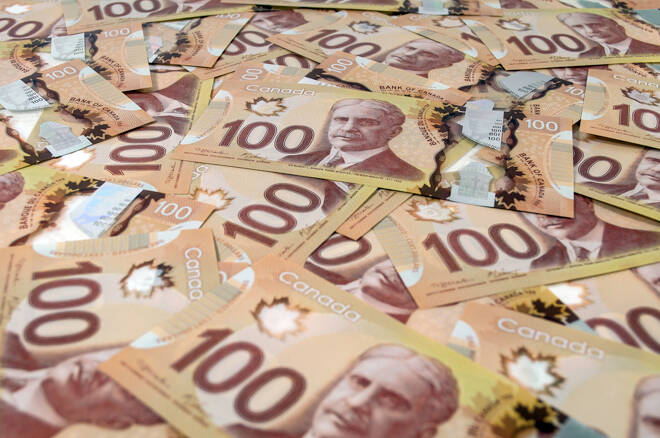Advertisement
Advertisement
USD/CAD: Loonie Remains Range-Bound But Hovers Near Three-Month Highs
By:
The Canadian dollar traded marginally higher, remaining range-bound in lacklustre trade against its U.S. counterpart on Monday, but the commodity currency hovered near three-month highs, thanks to surging crude oil prices.
The Canadian dollar traded marginally higher, remaining range-bound in lacklustre trade against its U.S. counterpart on Monday, but the commodity currency hovered near three-month highs, thanks to surging crude oil prices.
Today, the USD/CAD fell to 1.2344, near the three-month high of 1.2334 hit last week – from Friday’s close of 1.2366. The Canadian dollar gained about 2.5% so far this month after depreciating around 0.5% in September.
“CAD’s rally continued…with USD/CAD breaking decisively below 1.24. The focus…will mostly be on Canada’s CPI numbers for September. We think that a headline rate of around 4.0% should allow markets to further reinforce their view around the prospect of the Bank of Canada ending QE by year-end. Any above consensus read may fuel speculation that the Bank will start tightening earlier in 2H22 and add support to CAD. Still, we don’t think the USD correction has long legs, so USD/CAD downside potential should be more contained in the week ahead,” noted Francesco Pesole, FX Strategist at ING.
A release of September’s inflation data on Wednesday, October 20 may help guide expectations for the Bank of Canada’s policy outlook.
“One topic that should attract increasing market interest is the Bank of Canada mandate, which is due for renewal by the end of this year. The topic of inflation targeting is obviously quite hot, and rising inflation has been quite central in the latest election’s debate. We are inclined to think the current inflation target (2%, with a +/- 1% tolerance band) will be renewed, although there is some speculation it could be made more flexible, like in the US,” ING’s Pesole added.
Canada is the world’s fourth-largest exporter of oil, which edged higher on tight supply and higher demand. At the time of writing, U.S. West Texas Intermediate (WTI) crude was trading 0.33% higher at $82.54 a barrel – close to the highest since October 2014. Higher oil prices lead to higher U.S. dollar earnings for Canadian exporters, resulting in an increased value of the loonie.
The dollar index, which measures the value of the dollar against six foreign currencies, was trading 0.06% higher at 93.992. The U.S. dollar has gained across most currencies in the last few weeks as investors have become concerned the Fed may withdraw its economic support due to slow global growth and high inflation.
Investors were concerned that increasing inflationary pressures could pose a headwind to the economy and affect how soon the Federal Reserve may be able to raise rates. Rising bond yields have contributed to the strengthening of the currency.
It is highly likely that the world’s dominant reserve currency, the USD, will rise by end of the year, largely due to the expectation of at least one rate hike next year. With the U.S. dollar strengthening and a possibility that the Federal Reserve will raise interest rates earlier than expected, the USD/CAD pair may experience a rise.
About the Author
Vivek Kumarauthor
Vivek has over five years of experience in working for the financial market as a strategist and economist.
Advertisement
